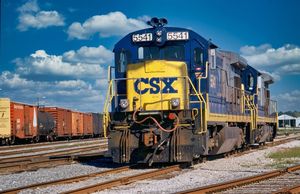
In the vast network of oil and gas pipelines spanning tens of thousands of kilometres, there is a seemingly inconspicuous yet critically important component — oil and gas pipeline fittings. Like the joints in the human body, they connect different sections of pipeline, ensuring the safe and efficient delivery of energy to households worldwide. From deep-sea oil and gas fields to urban gas pipelines, these ‘steel joints’ handle over 80% of global energy transportation tasks, with their performance directly determining the safety and efficiency of energy networks. Today, we will delve into the mysteries of these ‘steel joints’ from every angle.
Fitting Classification: The Showdown Between Seamless and Welded
1. Seamless Fittings
Seamless fittings are manufactured by piercing solid steel billets into hollow tubes, with their seamless structure making them the ‘safety guardians’ in high-pressure environments. During production, round steel billets are first heated to approximately 1200°C, then pierced into hollow tubes using a piercing machine, followed by processes such as cold drawing and hot rolling to refine the dimensions.
Advantages: Seamless pipe fittings have exceptional pressure-bearing capacity, capable of withstanding pressures exceeding 100 MPa, making them the preferred choice for high-pressure applications such as shale gas wellhead equipment and deep-sea oil and gas pipelines. Additionally, due to their seamless construction, these fittings minimise stress concentration points, exhibiting superior corrosion resistance when transporting highly corrosive media such as hydrogen sulphide (H₂S).
Disadvantages: Their complex production process results in higher production costs, and there are certain limitations in terms of size specifications, making it difficult to produce extra-large diameter fittings.
2. Welded fittings
Welded pipe fittings are manufactured by rolling steel plates into tubes and then connecting them using processes such as butt welding. The application of fully automatic submerged arc welding (SAW) technology enables the weld strength to reach over 95% of the base material.
Advantages: The primary advantage of welded pipe fittings is their ability to produce large-diameter fittings. Currently, fittings with diameters exceeding 4,000 mm can be manufactured, such as the tees used in the West-to-East Gas Pipeline trunk line. Additionally, their material utilisation rate is 30% higher than that of seamless fittings, offering significant cost advantages in large-scale long-distance pipeline construction.
Typical Processes: Butt welding is the key process for welded pipe fittings. Through precise groove processing and automated welding equipment, it achieves high-strength, high-seal connections. Induction bending technology, which uses medium-frequency heating to expand the pipe diameter, effectively addresses the issue of uneven wall thickness in large-diameter pipe fittings.


Key Manufacturing Processes: The Art of Bending
1. Heat induction bending
The heat induction bending process uses the eddy current effect generated by electromagnetic induction coils to locally heat steel pipes to 800–1100°C. Under high-temperature conditions, precise bending is achieved through mechanical transmission.
Advantages: Compared to traditional hot bending processes, induction hot bending offers higher precision and better wall thickness uniformity, with wall thickness reduction rates controllable at ≤8% (traditional hot bending: ≤12%) and angle errors as low as ±0.5° (traditional hot bending: ±2°). Additionally, production efficiency is significantly improved, with 5–8 bent pipes produced per hour—2–3 times that of traditional hot bending processes.
Application: This process plays a crucial role in subsea pipeline construction. For example, in the construction of subsea pipelines for the Lichuan 3-1 gas field in the South China Sea, induction-bent pipe fittings successfully withstood pressures at 600 metres water depth and ocean current impacts, ensuring stable natural gas transportation.
2. Induction Bending (Advanced Version)
The advanced version of induction bending integrates laser ranging and PLC (Programmable Logic Controller) to form an intelligent control system. By real-time monitoring and adjusting the bending speed and angle, precise control of the bent pipe can be achieved.
Typical case: In the construction of the China-Russia Eastern Route Natural Gas Pipeline (pipe diameter 1422 mm), 30° turning bends were made using advanced induction bending technology, with robotic welding achieving full process automation. This not only shortened the construction period by 40% but also significantly improved the quality stability of the bends.
New Industry Trends: Prefabrication
1. Prefabricated Pipes
The prefabricated pipe model integrates fittings, valves, and instruments in advance to form modular products, such as ‘valve group modules’ and ‘metering modules.’ This model has significantly transformed traditional engineering construction methods.
Advantages: On-site, prefabricated pipes can be directly assembled without extensive on-site welding and debugging work, increasing construction efficiency by over 50%. Additionally, prefabrication production is completed in a factory environment, ensuring stable production conditions and easier quality control.
2. Chinese Practice
In the Yamal LNG project in Russia - the world's largest polar LNG project, Chinese suppliers have shone brightly with innovative technologies. The project uses 9% nickel steel pipe fittings made in China, which are processed by advanced induction bending technology and can maintain excellent toughness even in extremely cold environments of -52°C. It is worth mentioning that the innovative prefabricated pipes scheme has successfully shortened the polar construction period by 40%. Now, the project stably delivers 16.5 million tons of LNG every year, and Chinese - made pipe fittings account for 35% of them, fully demonstrating the technical strength and market competitiveness of Chinese manufacturing in extreme environment projects.
3. The Rise of China Fittings
In recent years, China fittings companies have achieved dual breakthroughs in technology and market expansion.Chinese pipe fittings offer significant cost advantages while maintaining quality, with prices 15–20% lower than European and American products of the same specifications. Currently, Chinese pipe fittings are exported to over 50 countries in the Middle East, Africa, and other regions, accounting for over 30% of the global market share, making China one of the world's largest suppliers of seamless pipe fittings.
From the precision welding of butt welding to the perfect curvature of induction bending, oil and gas pipe fittings are evolving towards smarter and more efficient solutions. China-made fittings are reshaping the global market landscape, while innovative models such as prefabricated pipes will continue to drive industry transformation. Every technological advancement in these ‘steel joints’ contributes to safeguarding global energy security.
Media Contact
Company Name: CORTEC STEEL LIMITED
Email: Send Email
Country: China
Website: https://www.cortecsteel.com/






